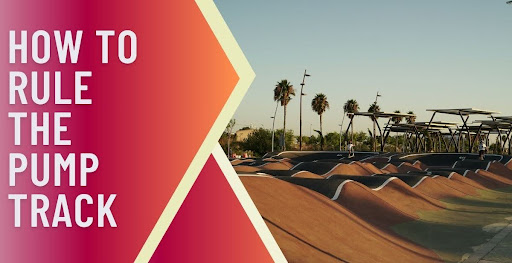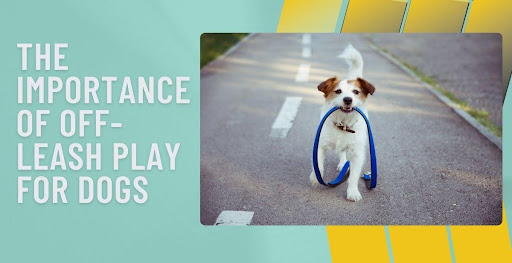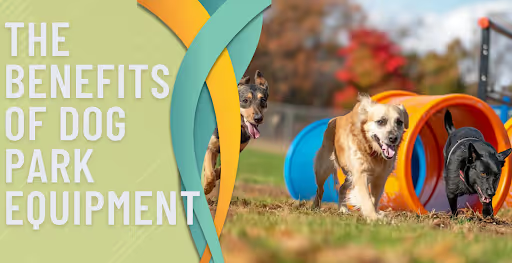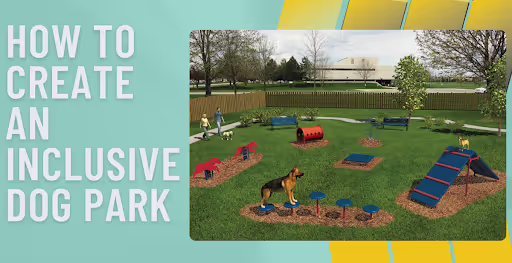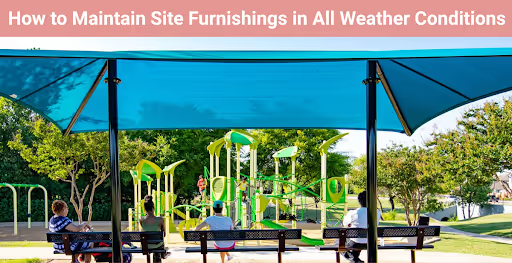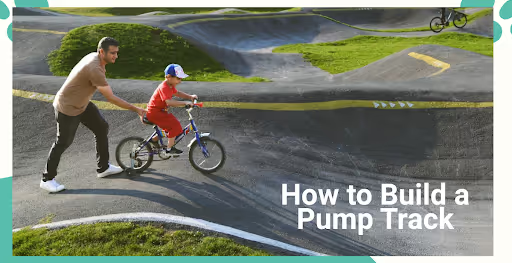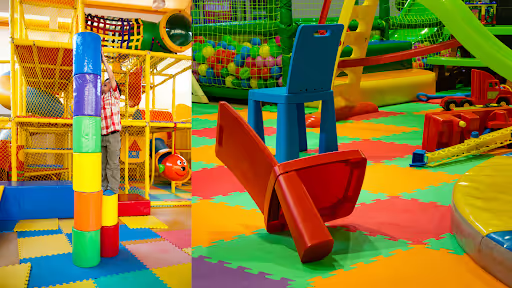How to Design a Dog Park
Planning a dog park? Learn how to design a safe, fun space your community’s dogs will love with this easy guide to getting started.


Dog parks have gained immense popularity among both dogs and their owners. If you're considering establishing a dog park in your community, here's a concise guide on the key elements contributing to a fantastic dog park and important factors to consider during the design process.
Why Are Dog Parks Necessary?
Dog parks play a crucial role in both urban and suburban areas. They provide opportunities for socialisation and exercise for dogs and their owners.
Dog parks become even more important in urban areas, where green spaces are limited. Whether a suburban homeowner looking to socialise their pups or an urban dweller needing off-leash area playtime, dog parks are essential for our furry friends.
Dog parks allow dogs to embrace their instincts, socialise with other dogs and people, and enjoy the freedom to run, and dogs love to release energy. They also foster a sense of community among dog owners, creating opportunities for connections and support for pet ownership.
Additionally, the benefits of having a dog park include enhanced physical health for dogs through regular exercise, mental stimulation, and opportunities for dogs to learn social cues and behaviors in a safe environment.
Tips for Designing a Dog Park

Choose the perfect location
Choosing a perfect location is the first and most essential consideration to take into account when planning a dog park.
Factors to consider when choosing your location
Accessibility: Ensure that the park is in a location that is easily accessible for most residents, whether by walking, driving, or public transportation.
Size: The park's size can vary depending on the community's needs. However, larger parks allow dogs to run and play more freely, catering to both small and large dogs run in the park.
Environment: Choose a location with natural shade or shading through trees, ensuring the park remains cool during hotter months. Also, consider the terrain; a mix of grass and dirt is ideal.
Selecting a safe, accessible, centrally located site is also crucial for the park's success. Any factor that would make the park difficult to find or unwelcoming to would-be patrons will adversely affect its success.
Prioritize a safe environment
Every dog park includes at least two (2) basic structures:
- fencing around the perimeter
- a staged entrance area
Fences should be five (5) feet or higher to prevent a dog from jumping over them. Entrances should be used as an effective buffer to your park, and consider a double gate system.
This area will give everyone much-appreciated breathing room as they enter and exit with their dogs. It also serves as an assimilation and introduction area and helps keep dogs from escaping.
Promoting inclusion and diversity at the dog park
A well-designed dog park can cater to a diverse range of dogs – from playful small dogs to senior dogs. Creating separate zones, sensory gardens for older dogs, or calm corners for less friendly pets is a testament to a great dog park that's inclusivity.
To create a dog park that prioritises the needs of the many dogs, focus on providing ample space for them to play freely. A wide entrance and separate areas for small and large dogs will ensure a safer environment.
Additionally, consider accommodating older dogs by providing a place to play off-leash for them to interact with smaller dogs. Smaller spaces within the park can also be utilised for obedience training by dog owners.
Choose durable surfaces
A mixture of grass, sand, and canine-friendly turf can be ideal. These surfaces are gentle on paws, reduce mud, and are relatively easy to maintain.
For several reasons, grass should be avoided as a surface for dog parks. The constant activity of dogs tears up the grass, creating muddy mess conditions when it rains.
These options offer durability, low maintenance, and environmental friendliness. While the initial cost may be higher, these surfaces provide attractiveness and manageability for an extended period.
Consider registering pet owners or using facility access codes
Various control systems such as dog tags, parking passes, card swipes, electronic pay stations, and Radio Frequency Identification (RFID) tags can be implemented to regulate access in restricted communities. Charging a nominal annual fee promotes better care of facilities.
It ensures funds are solely allocated for dog park maintenance and improvements rather than being mixed with the city's general funds. Dog park owners use cameras to monitor entrance areas of best dog parks and record evidence of incidents between pets or owners, as well as instances of vandalism or damage.
Additionally, cameras capture usage data for success stories, which can be used to promote the park and request funding.
Establish effective signage
Ensure clear display and enforcement of rules at your dog park. Post permanent signs at the entry gate with dog park rules and regulations, and contact information for authorities and management.
Incorporate nature
Creating a dog park in urban areas offers the tremendous advantage of greenery. Trees provide essential shade to prevent overheating and sun damage for dogs and people.
Protecting trees from frequent urination and choosing animal-safe plants are crucial for other parks planning. Sago palms, tulips, aloe, and daisies are among the harmful plants that can cause health issues, including liver damage and even death, if consumed by dogs.
Provide essential amenities
Water stations
Water fountains are crucial for the post-exercise health of both dogs and people. They eliminate the need for unsanitary standing water in bowls or buckets, which can spread disease and attract mosquitoes.
Stainless steel fountains prevent rust and offer additional options like maintenance hose bibbs, freeze-resistant valves, Americans with Disabilities Act or ADA accessibility, and sponsorship plaques.
Irrigation systems benefit all surfaces, reducing dust and eliminating odours, particularly in arid climates.
Park seating
A dog park with benches or seating provides an excellent opportunity for residents to socialise. Grouping the seating together and choosing materials like aluminium can ensure durability and avoid odour absorption.
Waste stations
Lots of dogs mean plenty of dog poop. Strategically place waste disposal stations with biodegradable bags to promote cleanliness.
For a reliable dog park experience, create a pet waste management plan with a professional removal service to address pet waste issues effectively.
Dogs may not be picky about where they relieve themselves, but their owners also require restroom facilities, especially at larger public parks. Installing a hand sanitiser station and a water supply is a good alternative if restrooms are unavailable.
Lighting
Timed lighting is valuable for maintaining safety, extending usability hours, and deterring vandalism. Opting for automated lighting can reduce energy consumption and minimise light pollution.
Solar lighting is an eco-friendly and low-maintenance alternative, ensuring the others stay illuminated even if one light goes out.
Trash receptacles
Trash receptacles are crucial for maintaining cleanliness and safety in parks, benefiting humans and dogs. The amount of dog waste can be minimised by installing receptacles with built-in doggy bag dispensers.
Furniture and shade shelters
Dog parks foster community and social connections—place benches and picnic tables in small groupings to encourage conversation among pet owners while avoiding congestion near entrances. Choose powder-coated metal or recycled plastic furniture for durability and rust resistance.
Shade shelters or gazebos are recommended to protect park users from rain, UV rays, and hot sun. Fabric shelters are affordable and may not require permits, but check zoning requirements
Larger hard-roofed shelters offer permanent solutions and can become community gathering spots.
Engaging community support
Dog parks serve as social hubs and promote community engagement by offering outdoor exercise opportunities to individuals who may not engage in organised sports or recreation, like tennis courts or basketball courts. Unlike children's playgrounds or weather-dependent activities, dog parks are utilised throughout the year, regardless of the weather conditions.
Dog parks offer cost-effective community destinations with low construction and maintenance expenses. However, convincing a hesitant community can be a challenge.
The key is highlighting how a dog park can benefit residents, further the recreation department, attract visitors, and enhance community services.
Park maintenance
A clean and inviting park is crucial for its ongoing success. People love visiting a fresh, well-maintained park with tidy landscaping and freshly cut grass.
Setting rules and involving the community in its upkeep will make your park a cherished gem among the community members.
Establishing guidelines
Dog parks promote legally responsible pet ownership and establish and enforce usage guidelines. Rules may vary based on off-leash areas and on the park's requirements. Some examples include:
- Respect the environment.
- Dog owners are legally liable for any injuries caused by their dogs.
- All dogs need current vaccinations.
- Owners must always stay with their dogs.
- Young children should be supervised for their safety.
- Dog owners must pick up after their pets.
- Aggressive, disruptive, or dogs in heat should not visit the park.
- Dogs must be leashed when entering or leaving the park.
Dog Park Equipment To Consider

Exercise keeps dogs physically healthy, but mental stimulation is equally important. An agility equipment park with jump-through holes, poles to jump over, and other obstacles helps build their skills.
- Jumps: Adding jumping exercises improves dogs' strength and coordination.
- Platforms: They promote coordination and concentration by encouraging jumping from one platform to another.
- Hurdles: Hurdles are ideal for larger to medium-sized dogs, improving leg strength and coordination by avoiding touching the support while airborne.
- Solid Vented Tunnels: Great for dogs of all sizes, helping them become more familiar with navigating tight spaces.
- Bridges: Bridges are designed for larger dogs to enhance their control,
- Weave Posts: Equipment for dogs of all sizes to improve coordination, speed, and agility.
- Photo Booth Panel: Photo booths are a fun addition to any dog park, providing an adorable opportunity to capture your dog's cutest moments.
Design Your Dog Park With Park N Play Design
Park N Play Design also provides the perfect environment for designing and building a dog park. We offer various services, including planning, designing, and constructing your dog park.
From fences to seating, we ensure your project is tailored to fit the needs of the individuals and families using it. To ensure that your park meets all safety requirements, we provide detailed support for ADA-compliant designs, ensuring every pet in your neighbourhood can enjoy a safe outdoor space.
We've covered everything from design to manufacturing, shipping, and installation. Please sit back, relax, and trust us to be the right partner for the job. Contact us today to learn more about how Park N Play Design can help make your dream come true!


